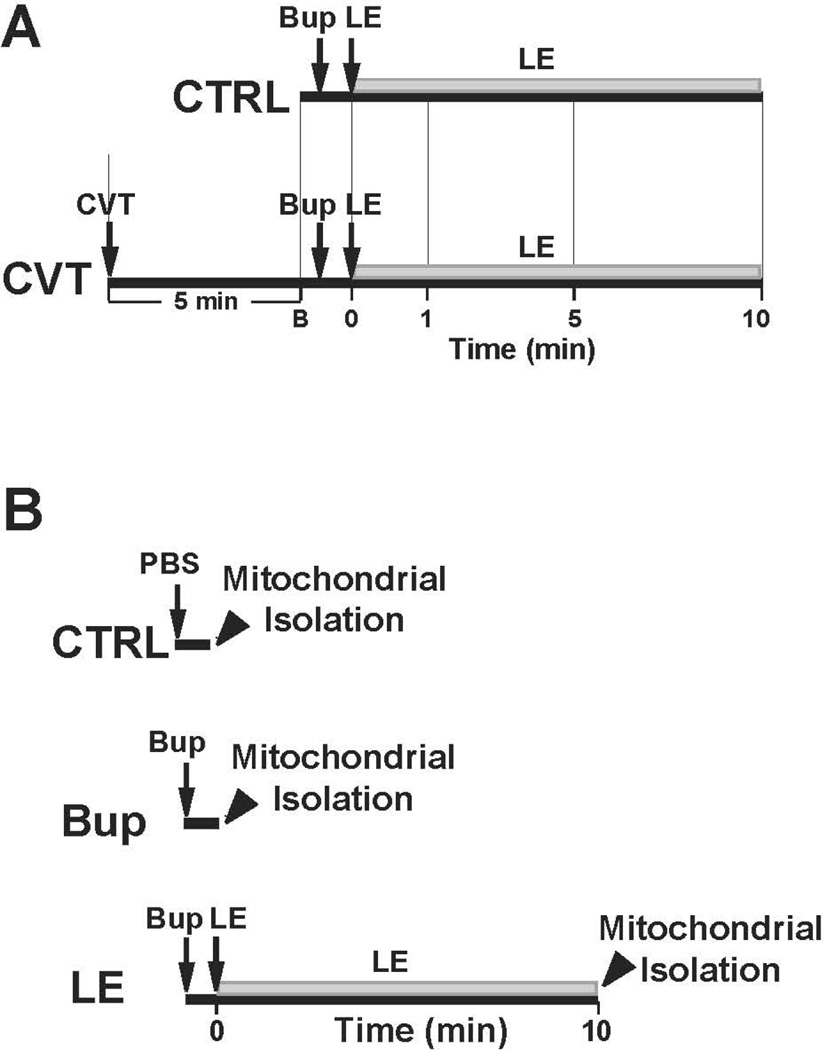Figure 1. Experimental protocols.
A. In control (CTRL) group, asystole was achieved by a single injection of bupivacaine (10mg/kg over 20 seconds) and resuscitation with LE (5ml/kg bolus, and 0.5ml/kg/min maintenance) together with cardiac massage was started immediately (n=6 rats). In CVT group, the experimental protocol was identical to CTRL group, except rats were pre-treated with different doses of CVT-4325 (0.5, 0.25, 0.125, 0.0625 mg/kg) for 5 minutes (n=3 rats/each dose of CVT). B. The mitochondria were isolated from 3 groups i) CTRL group, rats only received a single injection of PBS; ii) Bup group, rats only received a single injection of bupivacaine (10mg/kg over 20 seconds) to induce asystole and iii) LE group, after inducing asystole with bupivacaine overdose, rats were resuscitated with 20% LE (5ml/kg bolus, and 0.5ml/kg/min maintenance). Rats were sacrificed in all 3 groups at the time indicated with arrowhead (within 2 min of PBS/Bup infusion in group 1 and 2 and 10 min after LE infusion in group 3 as indicated with arrowhead and the mitochondria were isolated immediately only from left ventricle. The mitochondria were used for measuring calcium retention capacity (in response to Ca2+ overload), oxygen consumption, and membrane potential.

